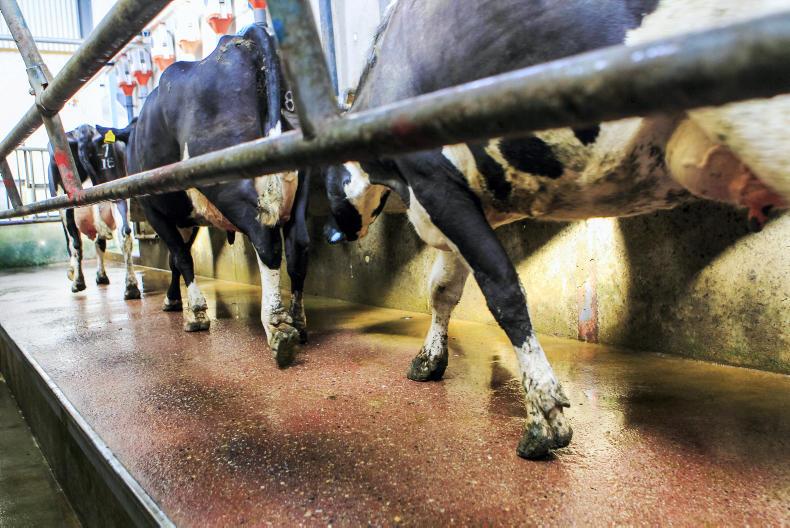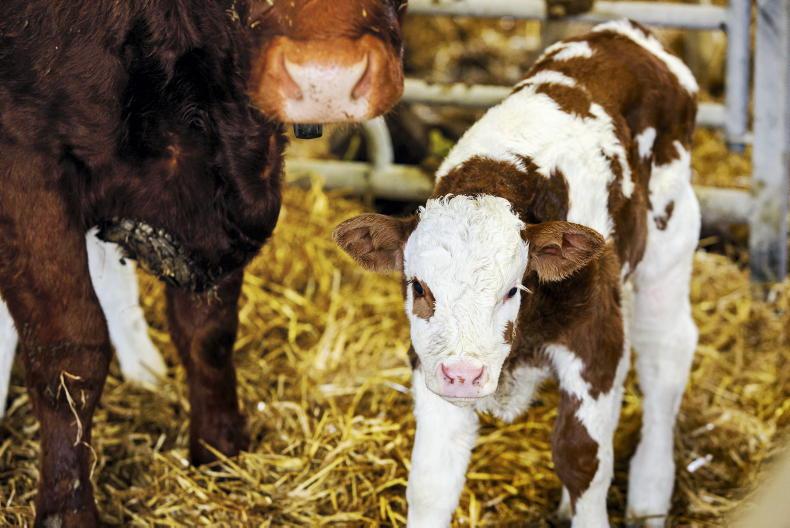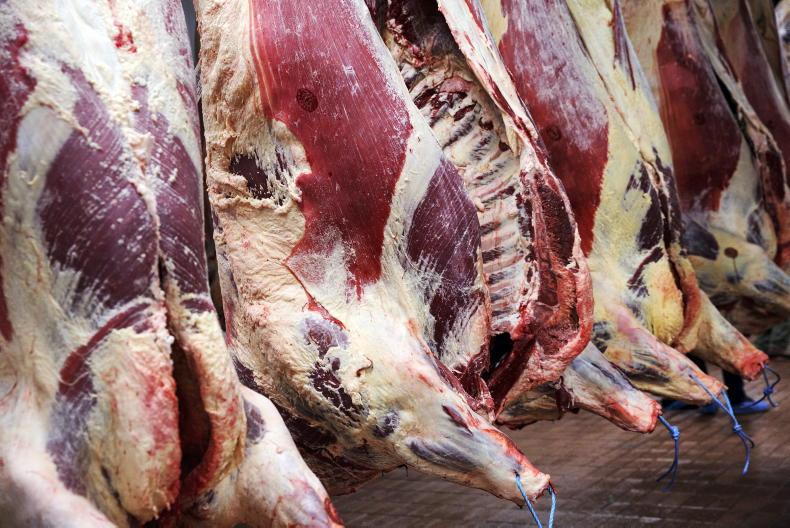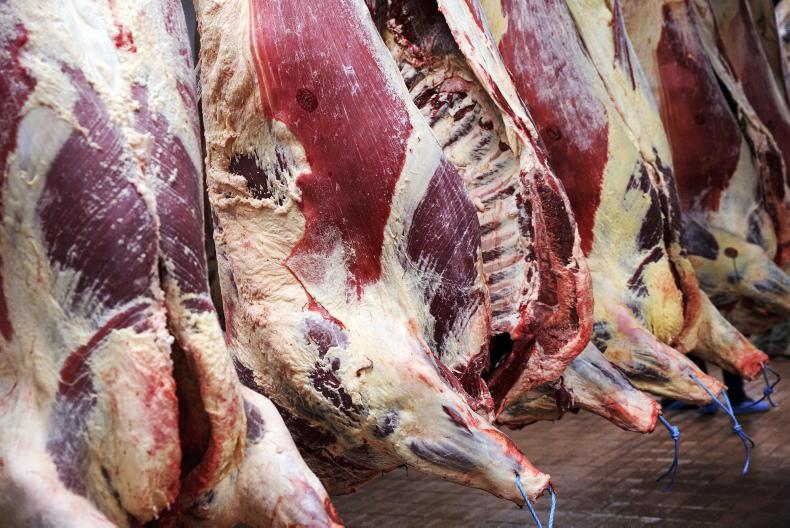It is the middle of the season for dairy farmers with autumn-calving cows and this is a suitable time to review and update cashflow plans. Participants in the Dairylink Ireland programme drew up budgets for the year ahead prior to the start of the 2019 autumn-calving season.
Like all forward projections, assumptions on a range of factors, such as milk price as well as meal and fertiliser costs, had to be made.
Updating these projections midway through the year and using records of actual cashflow for the last six months will give a more realistic projection of where the bank balance will be sitting by drying off in the summer.
Even in other dairying systems, such as year-round calving, taking time to update cashflow budgets in the spring is a useful exercise to help plan investments and capital expenditure over the coming months.
Also, with uncertainty in global markets due to the coronavirus outbreak, having a good handle on the cash position of the farm business could prove useful if the pandemic eventually hits farm margins.
Starting off
For farmers who have not done any cashflow planning at all, the first step is to pull together records of all receipts (income) and costs over the past 12 months. This will let you see where money came into and went out of the business and these records can be used to develop a cashflow plan for the coming 12 months.
A standard layout for a cashflow plan is to have a vertical column for each month of the year and horizontal rows for each receipt and cost. The main receipts are milk sales, stock sales (cull cows and calves) and basic payment. These are tallied up and a row is inserted to show total income in each month.
More rows are needed in the cashflow plan for costs. This includes concentrates, fertiliser and lime, drawings, contractors, machinery, veterinary, AI, paid labour, straw, electricity, repairs, land lease, accountancy fees and loan repayments. In the example in Table 1 below, most costs were merged into a single row of sundry costs to save space.
When total costs for each month are added together, net cashflow for each month is calculated by subtracting total costs from total income. This figure is then added to the previous month’s bank balance to give a projected bank balance for the month.
Weekly round-up
A mid-season update to cashflow plans should be carried out on Dairylink Ireland farms.Summer is an important period for managing cash on autumn-calving farms as milk sales drop.Capital investments should be made in high-return areas.A cashflow plan allows farmers to see how and when investments should be made.Making adjustments to cash budgets
The cashflow plans that were drawn up ahead of autumn calving last year included a milk price projection of 24p/l for the next 12 months.
This estimate proved slightly conservative, with base prices to Dairylink participants ranging from 24.5p/l to 25.25p/l from September to January.
In Table 1, average base price over the five-month period was 0.75p/l higher than initially budgeted, which equated to an extra £2,325 on the bank balance.
Cash has been saved, as meal costs per tonne were below the projected £250, although total meal fed could be higher this spring if turnout is delayed with wet weather.
Fertiliser costs per tonne are also less than expected, although some farmers have decided to forward buy more fertiliser than planned, which has adjusted cashflow positions this spring.
The cashflow plans have now been revised for the incoming six months. This is an important period for cash management on autumn-calving farms, as milk sales drop off during the summer.
The example in Table 1 shows that the farmer is projected to be down £13,716 over the next six months.
A new budget which will help manage cash ahead of peak milk output in the autumn and winter will be developed ahead of calving.
Addressing forecasted pressure
The whole point of developing a cashflow plan is to forecast where your bank balance will be at the end of each month for the next year.
It allows you to see if an overdraft is needed or if the farm’s cost base should be restructured.
The exercise might lead to a re-think around the short-term business plan for the farm.
This could involve funding capital expenditure from a short-term bank loan instead of cash reserves or delaying planned investments altogether.
All phase two Dairylink farmers are making investments at present, as they aim to make their businesses more resilient in the long term.
This means investing in high-return areas, such as improving grazing infrastructure to reduce bought-in feed.
Financial data from Dairylink farms has shown how capital expenditure can affect cashflow.
Some programme farms effectively made no money before basic payment, because capital costs were funded from the current account.
Cashflow planning allows a farmer to see how and when capital expenditure should be paid. It is ultimately about making informed decisions about financial management in good time.
Read more
Planning cashflow as margins tighten
Dairylink: a beginner’s guide to budgeting grass
It is the middle of the season for dairy farmers with autumn-calving cows and this is a suitable time to review and update cashflow plans. Participants in the Dairylink Ireland programme drew up budgets for the year ahead prior to the start of the 2019 autumn-calving season.
Like all forward projections, assumptions on a range of factors, such as milk price as well as meal and fertiliser costs, had to be made.
Updating these projections midway through the year and using records of actual cashflow for the last six months will give a more realistic projection of where the bank balance will be sitting by drying off in the summer.
Even in other dairying systems, such as year-round calving, taking time to update cashflow budgets in the spring is a useful exercise to help plan investments and capital expenditure over the coming months.
Also, with uncertainty in global markets due to the coronavirus outbreak, having a good handle on the cash position of the farm business could prove useful if the pandemic eventually hits farm margins.
Starting off
For farmers who have not done any cashflow planning at all, the first step is to pull together records of all receipts (income) and costs over the past 12 months. This will let you see where money came into and went out of the business and these records can be used to develop a cashflow plan for the coming 12 months.
A standard layout for a cashflow plan is to have a vertical column for each month of the year and horizontal rows for each receipt and cost. The main receipts are milk sales, stock sales (cull cows and calves) and basic payment. These are tallied up and a row is inserted to show total income in each month.
More rows are needed in the cashflow plan for costs. This includes concentrates, fertiliser and lime, drawings, contractors, machinery, veterinary, AI, paid labour, straw, electricity, repairs, land lease, accountancy fees and loan repayments. In the example in Table 1 below, most costs were merged into a single row of sundry costs to save space.
When total costs for each month are added together, net cashflow for each month is calculated by subtracting total costs from total income. This figure is then added to the previous month’s bank balance to give a projected bank balance for the month.
Weekly round-up
A mid-season update to cashflow plans should be carried out on Dairylink Ireland farms.Summer is an important period for managing cash on autumn-calving farms as milk sales drop.Capital investments should be made in high-return areas.A cashflow plan allows farmers to see how and when investments should be made.Making adjustments to cash budgets
The cashflow plans that were drawn up ahead of autumn calving last year included a milk price projection of 24p/l for the next 12 months.
This estimate proved slightly conservative, with base prices to Dairylink participants ranging from 24.5p/l to 25.25p/l from September to January.
In Table 1, average base price over the five-month period was 0.75p/l higher than initially budgeted, which equated to an extra £2,325 on the bank balance.
Cash has been saved, as meal costs per tonne were below the projected £250, although total meal fed could be higher this spring if turnout is delayed with wet weather.
Fertiliser costs per tonne are also less than expected, although some farmers have decided to forward buy more fertiliser than planned, which has adjusted cashflow positions this spring.
The cashflow plans have now been revised for the incoming six months. This is an important period for cash management on autumn-calving farms, as milk sales drop off during the summer.
The example in Table 1 shows that the farmer is projected to be down £13,716 over the next six months.
A new budget which will help manage cash ahead of peak milk output in the autumn and winter will be developed ahead of calving.
Addressing forecasted pressure
The whole point of developing a cashflow plan is to forecast where your bank balance will be at the end of each month for the next year.
It allows you to see if an overdraft is needed or if the farm’s cost base should be restructured.
The exercise might lead to a re-think around the short-term business plan for the farm.
This could involve funding capital expenditure from a short-term bank loan instead of cash reserves or delaying planned investments altogether.
All phase two Dairylink farmers are making investments at present, as they aim to make their businesses more resilient in the long term.
This means investing in high-return areas, such as improving grazing infrastructure to reduce bought-in feed.
Financial data from Dairylink farms has shown how capital expenditure can affect cashflow.
Some programme farms effectively made no money before basic payment, because capital costs were funded from the current account.
Cashflow planning allows a farmer to see how and when capital expenditure should be paid. It is ultimately about making informed decisions about financial management in good time.
Read more
Planning cashflow as margins tighten
Dairylink: a beginner’s guide to budgeting grass









SHARING OPTIONS